‘Laura has an orchard in the garden,’ said my friend, Rosie, over a gin-and-tonic.
Firstly, Laura and Rosie live in the same street in the market town of Faversham. The road is mainly Victorian, with terraced or semi-detached houses, plus some twentieth century or detached homes. It backs onto a similar street.

Laura grows dozens of different varieties of apple, side-by-side
How many fruit trees in an orchard?
The gardens in Laura and Rosie’s street are all about 60-80 feet long – a nice size, but not what I think of as big enough for an orchard in the garden.
Officially, the definition of an ‘orchard’ is five trees together.
‘How many trees does Laura have?’ I asked, visualising a rectangle of lawn with half a dozen fruit trees.
‘She doesn’t know. About eighty or a hundred, I think,’ said Rosie.
I revised my mental image of Laura’s garden, as I choked on my gin. Could I have missed the presence of a field nearby?
Laura’s late husband worked at Brogdale, the home of the National Fruit Collection, where he developed new apple varieties. He often brought seedlings home, so Laura now has a garden full of apple trees, many of which aren’t named varieties.
Cordon fruit trees – major space savers
I went to see for myself. Laura’s 60ft town garden has four rows of closely planted ‘cordon’ apple and crab apple trees, all looking healthy and laden with fruit. She also manages to fit in a terrace, shed and a small vegetable garden.

Rows of cordon fruit trees in Laura’s back garden. There are about fifteen or twenty cordon trees in each row, all in different varieties.
Cordon fruit trees grow on a single stem, either diagonally or straight up.

A professional orchard near me. It’s a stunning sight in early September, with the cordon-grown apple trees heavy with fruit.
We live in a fruit-growing part of Kent. The older orchards are being grubbed up as they exceed their natural lifespan. They had spreading branches, and were very beautiful.
All the recently planted professional apple orchards are cordon-style, with serried ranks of trees like soldiers on parade.
And from August to October, they are laden with colourful fruit.
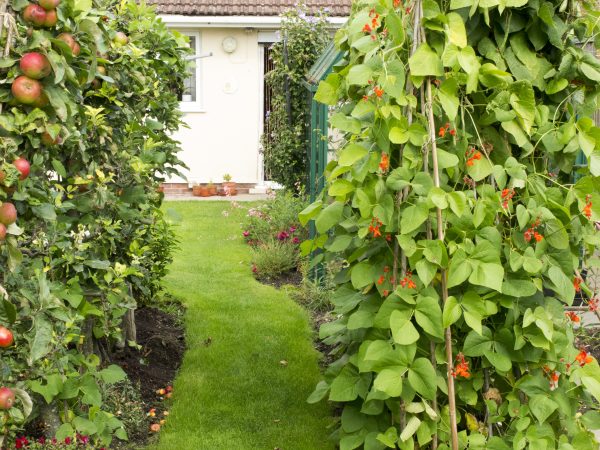
Laura’s apple trees grow in rows like her runner beans. They look just as healthy and productive – and would fit into the tiniest garden.
Borrow tricks from the professional fruit growers
Looking at Laura’s garden, I realised that the professional fruit grower’s way of growing fruit on cordon trees actually suits small gardens very well.
Maybe you might not want four rows of apple trees down the middle of your garden. But one row as a screen, or along the fence, would be a wonderful way of maximising fruit.

Pippa and James grew this espaliered pear tree as a screen for a window, but it also yields excellent pears. There’s more about trees for screening here.
Cordon trees can be planted 2-3 feet (60-80cms) apart, so even if your garden is just 18ft wide or long, you could plant six cordon fruit trees. You’d have wonderful blossom in spring, and a fabulous harvest in autumn, while taking up very little space.
Although different fruit varies, a cordon tree can yield up to 10kg of apples, so you could grow 60kg of apples a year.
And the trees, so close together, would screen a fence, wall, road or eyesore beautifully. I’m really surprised people don’t do more with fruit trees in design terms.

This shows how closely the apple trees are planted in Laura’s garden.
Which fruit trees are best for an orchard in the garden?
Edible Culture in Faversham specialises in creating orchards of all sizes, including orchards in gardens. So I asked Dave of Edible Culture what ordinary gardeners need to know about planting cordon fruit trees.
‘Firstly, you should buy them on an M9 rootstock’, he advises. This means they won’t grow higher than two or three metres. And cordon trees need to be supported on wires, a fence or a wall.
He also advises choosing spur-fruiting varieties over tip-fruiting varieties. ‘If your fruit grows on the tip, then you’ll be cutting off the fruiting parts when you prune it back,’ he says. With spur-fruiting varieties, the fruit grows on spurs coming off the main stem or trunk.
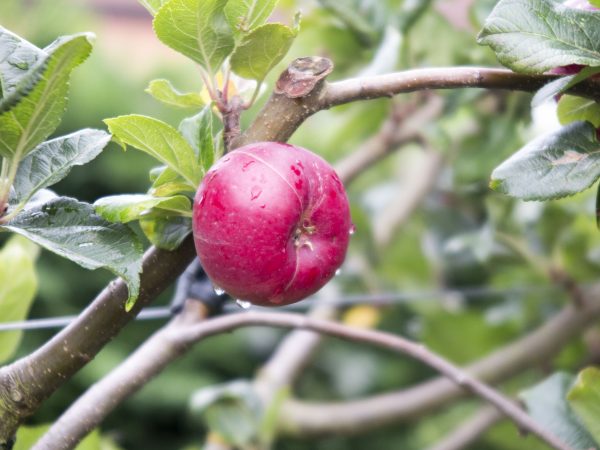
We grow these spur-bearing ‘Pink Lady’ apples as espaliers to screen a path.
Finally, you need to check whether they need another apple tree near them for pollination. Different varieties will need pollination at different times.
What fruit can be grown as a cordon?
According to the RHS, you can grow any fruit with a pip as a cordon, but fruit with stones, such as cherries or plums, are likely to be less successful. They have useful advice on identifying spur-bearing apples and pears here.
So, ask your fruit tree supplier if the tree is appropriate for cordon growing. But, as Laura’s garden shows, many apple and crab apple varieties will grow as cordons.
Which are the best fruit trees to buy?
At Edible Culture Dave specialises in selling heritage fruit trees, as well as chemical-free products, supports and solutions. Rather than growing apples or pears you can easily buy in supermarkets, it would be nice to support a rare variety.
And if you’re interested in growing apples to make your own cider, this post from bloggers Two Thirsty Gardeners has the best five apples for grow-your-own-cider:
You can even order cordon fruit trees from Amazon (affiliate link – you can click through to buy. If you do, I may get a small fee).
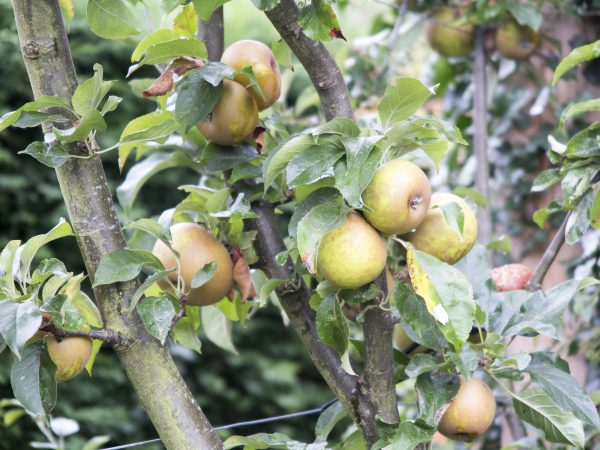
You can order a ‘Russet’ cordon apple tree from Amazon, like this ‘Russet’ in our garden.
How to care for an orchard in the garden
Caring for fruit trees is like caring for many plants. You can get really involved and knowledgeable, or you can bumble along.
Laura says that she doesn’t do a great deal for her fruit trees. She prunes them in February, taking them back to the fruiting spurs. And if tendrils snake out during the summer, she just cuts them off.
I once came across some professional fruit pruners in a field. I asked how I should prune my apples. ‘Oh, just cut off the bits you don’t want,’ they said. Hmm…
However, find clear and simple apple tree pruning advice for gardeners in How to Prune An Apple Tree by Chloe Ward.
We have espaliered fruit trees in the garden here, screening the veg bed from the path. All we do is prune them, and we have a good harvest of apples most years. I don’t feed them (Dave says it’s not necessary to feed mature fruit trees).
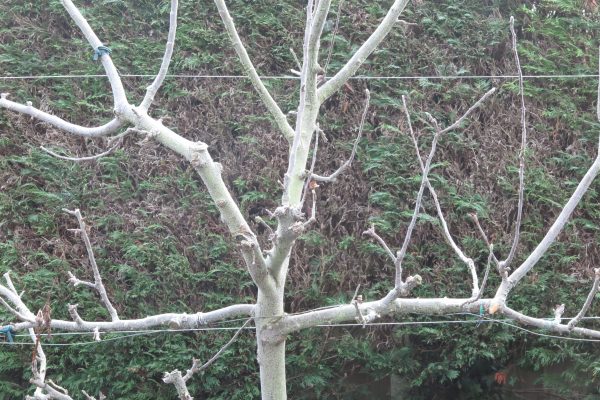
Our espaliered apple trees, after their February pruning. The late frost didn’t seem to hurt them. Espaliered fruit trees are also great for smaller gardens.
And I personally don’t spray our fruit trees. We do share a few apples with the odd something-or-other (I don’t look too closely) but there are still as many good apples as we can eat.
And if you want a book on ‘how orchard living can be incorporated into every lifestyle’, try Naomi Slade’s An Orchard Odyssey. James Wong describes it as ‘a practical guide to getting started…even in the tiny modern garden.’
Finally, I’d love to see garden designers incorporate more fruit trees into their urban gardens. Do share or comment if you agree. Thank you!
Pin for reference:
The post An orchard in the garden? You really do have the space! appeared first on The Middle-Sized Garden.
from The Middle-Sized Garden http://www.themiddlesizedgarden.co.uk/an-orchard-in-the-garden-you-really-do-have-the-space/
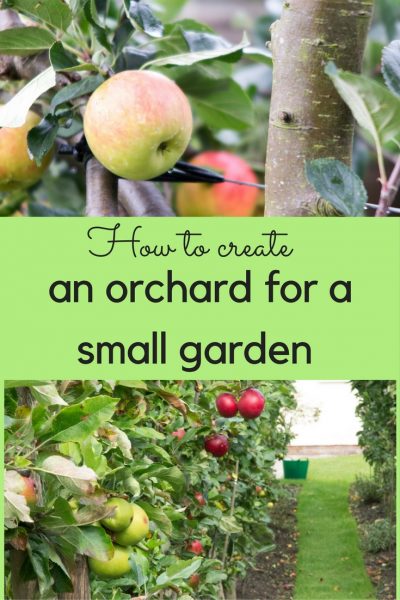
No comments:
Post a Comment